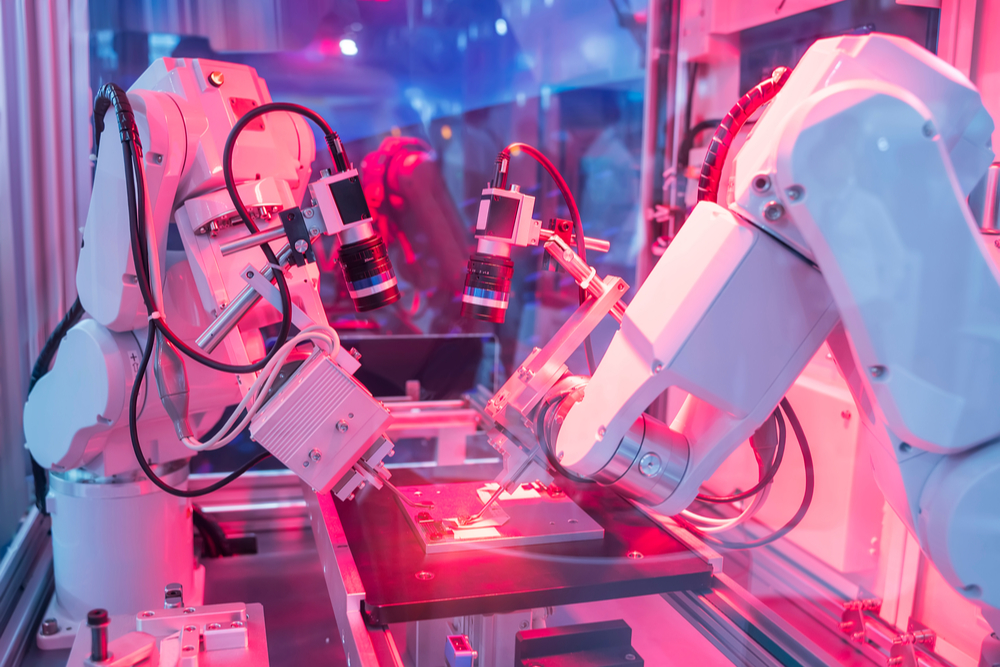For manufacturers there is a silver lining to the triple whammy of Covid, Brexit and the resulting supply chain crisis, says Conor Magee, head of Manufacturing at Bank of Ireland.
What one feature do the leaning tower of Pisa, Covid-19, Brexit, and global supply chains all have in common? Answer: the “Law of Unintended Consequences.”
The Law of Unintended Consequences can be defined as “outcomes of a purposeful action or a game changing event that are not intended or foreseen.”
“Manufacturing has experienced largely unforeseen changes both positive and negative in the last 18 months arising out of the shocks of Covid-19, Brexit and consequential supply chain challenges.”
Outcomes can be positive, with unintended benefits, negative, with unexpected downsides or indeed perverse whereby an intended solution actually makes a problem worst.
Increasingly often, when we try to make a single change or a major shock occurs within a complex interconnected system, as in our global economy, we often end up with far reaching unintended consequences both negative and positive. The better we can anticipate these potential consequences the more likely we can expect to achieve our desired outcomes.

Before we talk about manufacturing, where does the Pisa Tower fit in? Well it was never intended to lean in the first place and great efforts were made to straighten and counter the subsidence over the years. In the end it has become one of the world’s top tourist sites bringing enormous economic benefit to the region. A negative start turned supremely positive.
Manufacturing has experienced largely unforeseen changes both positive and negative in the last 18 months arising out of the shocks of Covid-19, Brexit and consequential supply chain challenges.
The Covid-19 pandemic and manufacturing
Covid-19- has impacted Manufacturing companies differently based on supply chain design, market demand dynamics, seasonality, market access and factory operations restrictions. While factories are back up and running, Covid-19 has brought into sharp focus safety and well-being of personnel. While safety has always been a number 1 priority for Manufacturing, Covid-19 has added the requirement of temperature testing, rapid antigen testing, increased workplace cleanliness and contact tracing.
While factory operations have without doubt experienced drops in productivity with the new rules of social distancing, testing, remote working all impacting the “cut and thrust” and “problem solving” nature of manufacturing operations.
However manufacturing has proven time and time again to be agile and creative in its response with part of the solution being the acceleration of the digital agenda. No longer seen as longer term agenda item, manufacturing has stepped up its game in terms of automation, greater online presence and real time data driven logistic systems. Indeed recent research from Accenture show that driven by the shock of the pandemic technology adoption leaders are growing at rate 5 times that of adoption laggards. Scaling Enterprise Digital Transformation | Accenture
As vaccine coverage peaks and manufacturing surges forward on back of high orders and strong production, many of the positive consequences will remain in place or gain further traction. Remote working, acceleration of technology, more secure supply chains, enhanced safety environments and even newly acquired customers will remain the lasting positive consequences of Covid 19.
Brexit
Despite the divisiveness of Brexit and its many detractors, nobody really predicted the true scale of consequences for Irish industry and its manufacturing base. The most recent CSO data reveal a dramatic shift in trading patterns for Ireland with imports from UK down YOY for H1 2020 by 35pc and up from EU by 27pc.
There is no doubt that supplier substitution has played a part in this shift although part of it is as a result of UK suppliers moving their base to EU countries to avoid the Brexit red tape. Similarly logistics and transportation have to a large extent irreversibly changed with landbridge traffic down 60pc and manufacturers have simply prioritised direct and secure routes from EU over pre Brexit lower cost and faster land bridge alternatives.
Both Brexit and Covid have also exacerbated the availability of truck drivers with UK reporting shortages of more than 100,000 drivers as drivers returned home or simply want to operate within friction free borders.
Manufacturers have de-risked their Brexit exposure through a mixture of higher stock levels, direct transport routes, supplier substitution and in house technology transfer. The latter is an interesting and positive consequence for Irish and Manufacturing companies with a number of Irish manufacturers investing in new technologies and equipment to bring technology and process in house and avoid the additional hassle, costs and uncertainties of supply around UK related imports.
Similarly many of our partners in the EU have called upon Irish manufacturers to substitute for UK suppliers because of the Brexit induced barriers highlighted above.
In summary Brexit as acted in many ways as a catalyst and an accelerant of many positive supply chain improvements together with positive developments in new EU customer acquisition for Irish manufacturers.
Global supply chain tsunami
There is no doubt that triggered by Covid, global supply chains have experienced the worst tsunami like turbulence in recent times. The interdependency, interconnectivity and associated fragility of global supply chains have been exposed, challenged and called them into question. A perfect storm of Covid, Brexit, high demand, container shortages, transport interruptions have combined forces to wreak havoc across previous Just in time, low inventory models.
New terminology abounds within board rooms and senior teams are spending much more time discussing “Supply Chain Resilience”, “Becoming Less Lean”, “Container Dislocation” and “Semiconductor Chips Shortages.”
- Supply Chain Resilience: As per recent survey (Source: Gartner), 89% of respondents are investing to make supply chains more resilient and agile. There is a clear recognition that global best cost country model supply chains will shift overtime to regional models with shorter and more certain transit times
- Becoming Less Lean: Who would have thought that “becoming less lean” almost an anathema to the relentless continuous improvement bedrock (Kaizen) of all things lean, would become part of the solution to supply chain challenges. Just in time models are being replaced in part with higher inventory models to build more slack in manufacturing operations and buffer against disruptions. This of course adds working capital costs right through the end to end supply chain. In the aftermath of Brexit and Covid many manufacturers have quadrupled volumes of critical components both for product supply and critical maintenance needs all with the objective of keeping the show on the road and running with no interruptions.
- Container Dislocation: in 1956, the first make shift container ship with 58 containers set sail from Newark to Houston. From that humble beginning, container shipping has developed into a huge global industry, transforming manufacturing and now shipping upto 24,000 containers on a single mega container ship. So when containers go missing or are stranded as has being the case with Covid lockdowns, it really is a big deal for manufacturing. Apart from the initial dislocation, with containers stranded in the wrong ports, there have been port closures in China, port congestion in US, ship diversions and of course the infamous Suez canal blockage. These have all created havoc and compounded delays within the supply chain, prices have rocketed and inflation is feeding into component and commodity prices across the board. It is likely to be 2022 before the situation eases and so no surprises if some Christmas lists fall short of demand.
- Semiconductor shortages: The other bigger supply chain bottleneck is off course the shortage of Semiconductors chips. Car manufacture is the most visible sign of this with VW, Toyota shutting down capacity by as much as 40pc. New and second hand car prices are rising as a result. Again it will be 2022 before supply starts to catchup with demand and in the meantime many product categories from phones, to white goods to cars will be negatively impacted.
So back to unexpected benefits of supply chain havoc. Well perhaps it will slow down rampant Global consumption of consumer goods to the benefit of the sustainability agenda. If consumption continues to follow global growth trends, then according to the WEF, China consumption will double to $8.4Ttn , India consumption quadruple to $6tn by 2027. These increases along with consumption trends in the West will have a catastrophic environmental effect. So anything that slows this down and moves the global consumption model away from a liner model to a circular one can help to avert the looming climate crisis.

Source: WeForum.org
As the graphic shows the circular economy prioritises a move away from the all too familiar take make waste cycle to a reuse, reduce, recycle.
In closing it is estimated by GEP a global leader in digital supply chain transformation a leading that up to $4trn in revenue may have evaporated in supply chain disruptions. However it might be argued that maybe this massive loss contributed some unintended positive climate benefits and will no doubt accelerate a move away from global supply footprints to more climate friendly regional ones.





